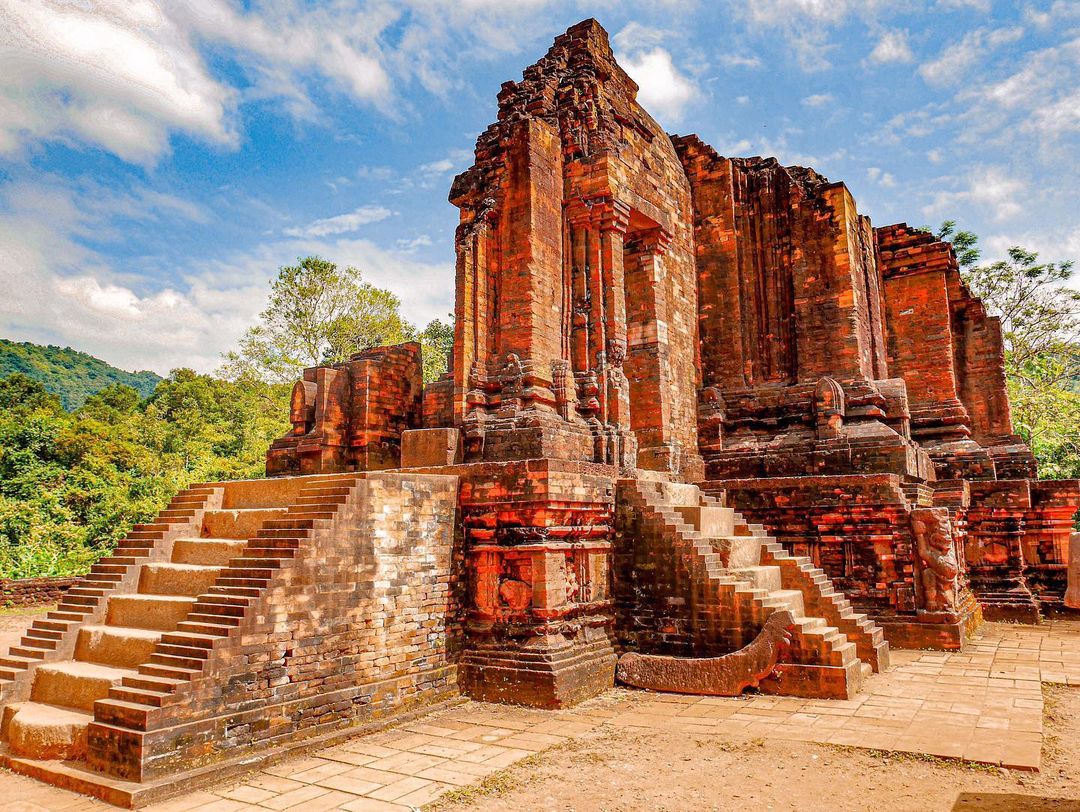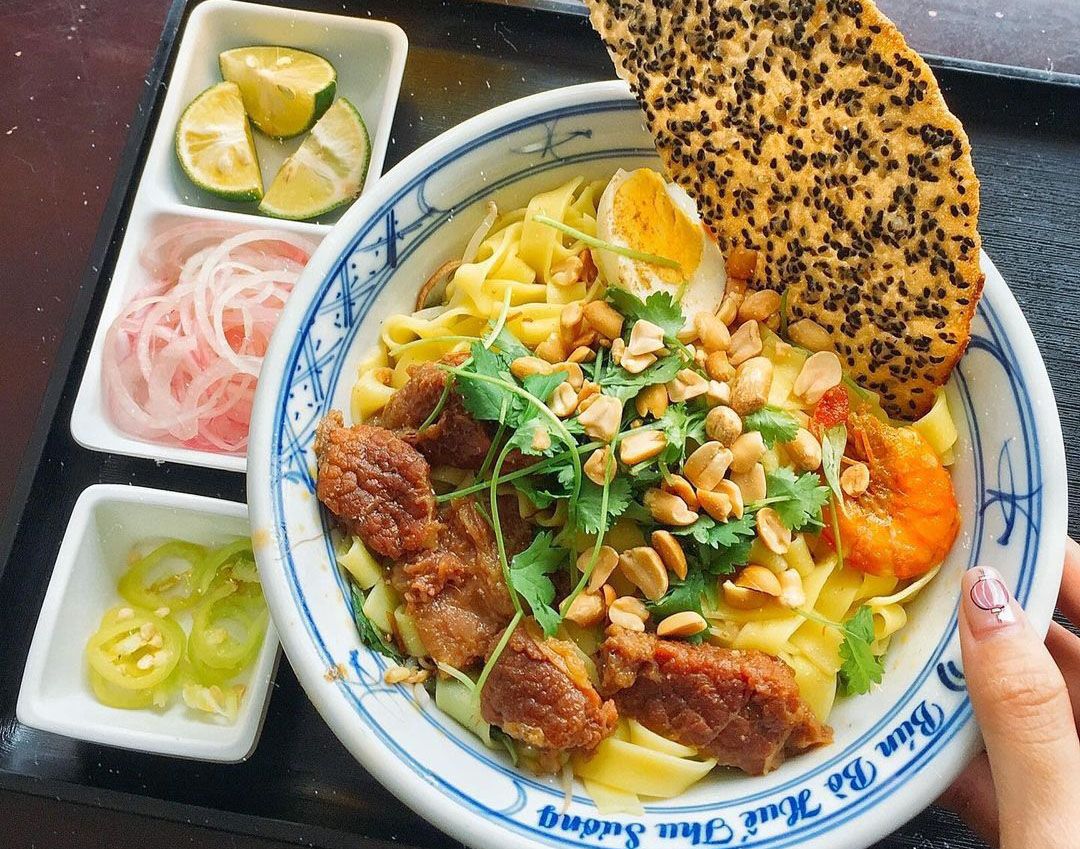A visit to My Son Sanctuary will make your trip to Hoi An or Da Nang much more memorable. Explore the past of the ancient Kingdom of Champa at this breathtaking UNESCO World Heritage Site.
In December 1999, UNESCO designated My Son Sanctuary as a World Heritage Site. This Cham tower complex is one of Vietnam’s most beautiful and impressive Cham temples. Each temple has a unique structural style that reflects the historical stages of the Champa kingdoms. Only about 20 of these temple towers still stand in My Son because of natural disasters and war-related damage. However, it is still a destination that attracts tourists from all over the world.

1. Where is My Son Sanctuary in Vietnam?
1.1. Location, opening hours, and ticket prices of My Son Sanctuary
My Son Sanctuary comprises several ancient Cham temples spreading across a 2-kilometer-wide valley surrounded by hills and mountains. Although time and war severely damaged these relics, what remains in My Son plays an important role in world history and culture.

- Address: Duy Phu Village, Duy Xuyen District, Quang Nam Province
- Opening hours: 6:30 am – 5:30 pm (every day, including holidays and Tet)
- Entrance fee: 150,000 VND (including the fees to My Son Sanctuary and the Champa Museum). This price applies only to self-guided visits to My Son without any tour guide service. It includes a 2-kilometer-long electric car ride to My Son’s center and art performing areas.
1.2. How to get to My Son Sanctuary?
My Son is about 69 kilometers away from Da Nang and 45 kilometers away from Hoi An Ancient Town. So, you can reach My Son, Vietnam from both cities.

2. History of My Son Sanctuary Quang Nam
My Son Sanctuary was built between the 4th and 13th centuries CE. During this time, Cham is a unique culture that developed on the coast of modern Vietnam and has its spiritual origins traced back to Indian Hinduism.

This is shown by the ruins of a series of impressive tower temples in a dramatic site of My Son Holy Land, which served as the Champa Kingdom’s political and religious capital for most of its existence. The stone stele of the Cham royal dynasties have proven My Son to be the most important Holy Land of the Cham people during those centuries which reflects their style and history.
3. Highlights of My Son Sanctuary
The conservation area covers 1158 hectares. Because the area is quite large, it will take you 2 to 3 hours to explore its highlights.

3.1. Ancient Cham architecture of My Son Sanctuary
Apart from religious features, the most captivating aspect of My Son Sanctuary is its unique Cham style of architecture, which was heavily influenced by the Indian style. The Cham towers were all built on quadrilateral foundations and each comprises three parts:
- A sturdy tower foundation: representing the mortal world;
- The enigmatic and sacred tower body: representing the spirit world;
- The tower top (shaped like a man offering flowers and fruits, or trees, birds, animals, and so on): representing things that are close to spirits and human beings.

Although there are not many relics left, those that still stand are the typical sculptural works of the Cham people’s cultural value. They are clear proof that confirms the history of an ethnic group that lives within the Vietnamese community and has a rich cultural tradition.
3.2. My Son Sanctuary Museum
After passing through the ticket office, pay a visit to the museum. Here, you will get to know the general information about My Son relics and culture. Inside the museum, there are many posters and pictures explaining the history of My Son Sanctuary, which will be extremely useful if you plan to explore the site without the help of a professional guide.

4. Must-try food near My Son Sanctuary
While visiting My Son, don’t forget to try these iconic central Vietnamese traditional delicacies, which will undoubtedly tickle your taste buds. There are a few restaurants at the entrance to My Son, as well as some eateries in the nearby towns.

You should try the following famous foods:
- Quang noodle (mi Quang)
- Cau Mong smoked calf (Be thui Cau Mong)
- Phu Chiem noodle (mi Phu Chiem)
- Vietnamese pancake (Banh xeo)
- Rice cracker (Banh trang dap)
